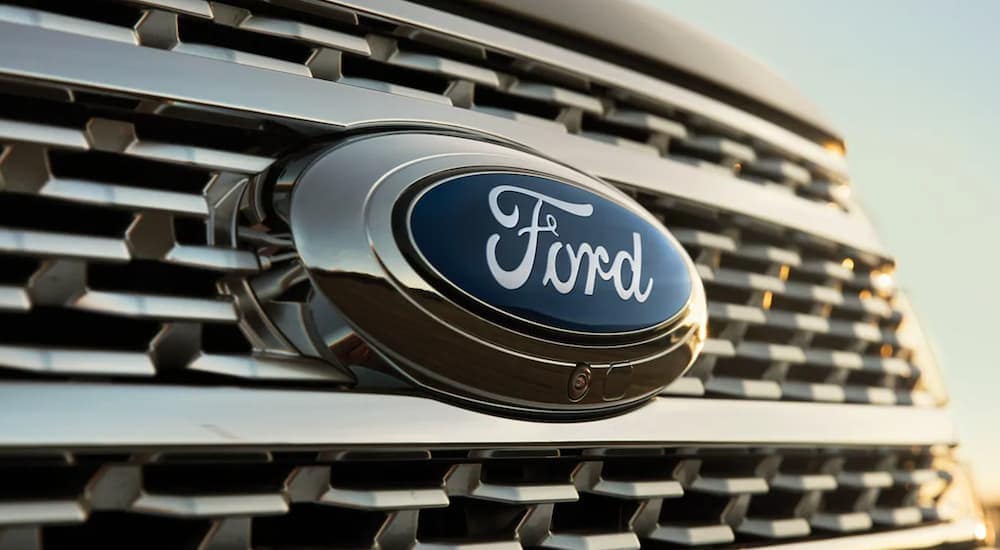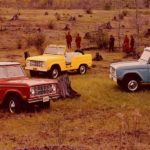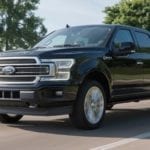The Ford Motor Company has been in business for close to 120 years. It has seen incredible growth and innovation over that time to become a worldwide industry that develops far more than just automobiles. All too often, we reduce a company to a logo or a brand name that rarely sparks much more interest than what we thought of its latest product. Henry Ford built the Ford Motor Company with belief, resolve, and dedication to his excitement about mechanical objects, and because he remained stalwart to his dreams, his company shaped history. The next time you head to your used Ford dealership, keep in mind this nod to Ford history. It may give you more appreciation for the vehicles we get to drive today.
Early Life of Ford and the Founding of Ford Motor Company
Henry Ford grew up curious about mechanics, dabbling in a shop he built himself. By the time he was 15, Ford had built a steam engine on his own. At the age of 19, he had completed his apprenticeship as a machinist in Detroit, then worked at repairing steam engines for a year in southern Michigan. In 1891 an exciting opportunity arose, and Henry Ford was hired as an engineer at the Edison Illuminating Company of Detroit. His work was honored with the promotion of chief engineer by the year 1893, only two years later.
This early experience with mechanics led to the inevitable desire to build a vehicle, which Ford did in 1893. His first internal combustion engine successfully started right on his kitchen table, and then he used a form of that same engine in his first vehicle, the “Quadricycle,” in 1896. Ford’s first gas-powered vehicle was little more than a wooden box with four bicycle wheels attached, but it started the revolution of his future as an automotive inventor.
However, commercial success was harder to find. Ford’s first attempt, the Detroit Motor Company, went bankrupt in 18 months. His second attempt, the Henry Ford Company, still exists today – but it was renamed Cadillac after Ford himself left early on. But the third time was the charm, and in 1903, the modern Ford Motor Company was founded.
Ford Makes History and Builds for the Allies
When his company turned a profit within the first year of business, Ford ran with the success and built a new plant in Ontario, Canada, to serve both Canadians and the British Empire. When the Model T came out in 1908, it was so successful Ford had to problem-solve in order to keep up with demand. He built an assembly line for mass production at a new factory in Highland Park, changing history in the way cars were built and then making history with the sheer volume of cars he sold. By the time Model T production ended in 1928, Ford Motor Company had sold 15 million examples, making it one of the highest-selling vehicles of all time.
The innovation of the assembly line made it possible for Ford to drastically lower the price of the Model T and make it affordable for everyone, not just the wealthy. Because Ford was able to produce cars so quickly and efficiently, his success in sales then became a reward for his employees. In 1914 Ford started paying employees $5 per day, a wage that doubled their previous pay and brought them into the middle class. This pay raise allowed his workers to afford the cars they were building. He also reduced the number of work hours from nine to eight and created three work shifts in a day to replace the previous two, which further increased production.
Ford continued to innovate and expand his business, and in 1917 he founded the now famous River Rouge factory, which became the largest in the world in only a decade. Within the Rouge Complex, over 100,000 employees were hard at work by the 1930s to produce everything necessary to build a car. Steel, glass, rubber, and even lumber were all produced to make the entire process self-contained. In the same year, Ford built its first truck based on the Model T chassis. This same factory complex was put to use for the war effort only a year after its founding to produce ambulances, tanks, and even airplane engines for the Allies in WWI. When veterans returned home from the war, Ford hired them and became the first to adjust the workplace to serve the needs of the disabled.
The Company Changes Leadership and Supports Another War
In 1919, Ford was able to buy out the investors in the Ford Motor Company so that he and his family would be the sole proprietors. Henry put his son, Edsel, in charge of the company, and then Ford bought the Lincoln Motor Company in 1922. Edsel Ford was instrumental in the creation of the Lincoln Continental, a car almost any American knows by name, and is still known for the designs he created during his work with the company. By 1925, Ford began production of its tri-motor airplanes, which helped make commercial air travel possible, and even allowed the use of his patented work free of royalties to help stimulate the industry.
When Ford retired the Model T in 1927, he shut down his factories for six months to “retool” them for building his next vehicle: the Model A. This was the first vehicle to sport the blue oval logo still in use today, and he managed to sell five million units in spite of the effects of the Great Depression. When the next World War struck, Ford was once again at the center of production for the Allies, building thousands of airplanes, jeeps, tanks, and other equipment for the war effort. Because the plant was able to turn out an airplane every hour, Detroit became known as the “Arsenal of Democracy.” Even more claims to fame show up in the consultation of Charles Lindbergh during this time, and then Rose Monroe was made famous as “Rosie the Riveter” while she worked in the Willow Run plant during the war.
Future Developments Embrace Modern Ideals
Sadly, Edsel Ford’s life was cut short by stomach cancer, and he died in 1943. This shook up the natural order of progression and forced Henry back out of retirement to keep the company running. Fortunately, Ford’s grandson, Henry Ford II, was able to take over in 1945 as head of the company. When young Henry accepted responsibility for the Ford Motor Corporation, he discovered disorganized management of the books, which he soon shifted into modernized systems for a more orderly functionality as the company continued to innovate and grow.
During young Henry’s time of leadership, the now-iconic F-Series trucks were developed and produced in 1948, eventually becoming the best-selling trucks in the United States. In 1954 the Thunderbird became an instant classic, and in 1964 the Mustang launched the pony car segment and still holds the title of one of the fastest-selling cars in history. As part of its many business endeavors, Ford even owned Philco, supplying mission control for the first trip to the moon. Philco also supported NASA with its Apollo and Gemini missions and built satellites still used today to transmit phone calls between continents.
By 1980, Phillip Caldwell became the first chairman of the Ford Motor Company who was not a member of the Ford family. Remarkably, it had been a family-run business for over 75 years. During the next two decades, Ford released several more vehicles that became standards of the Ford moniker, with the Taurus in 1985, the Explorer in 1990, and the Lincoln Navigator in 1998. Ford’s commercial success meant that the company managed to handle the 2008 financial crisis without needing the financial bail-outs of the other American automobile manufacturers.
Ford has changed CEOs a few times in the last decade, but the company remains invested in the same innovation and ingenuity that was instilled into it by Henry Ford. Today, Ford is innovating on the new fronts of self-driving technology, sustainable manufacturing, and electric vehicles like the Mustang Mach-E and Ford F-150 Lightning. From working with Edison to building a worldwide corporation, Henry Ford left a legacy of creativity that changed the entire world.




